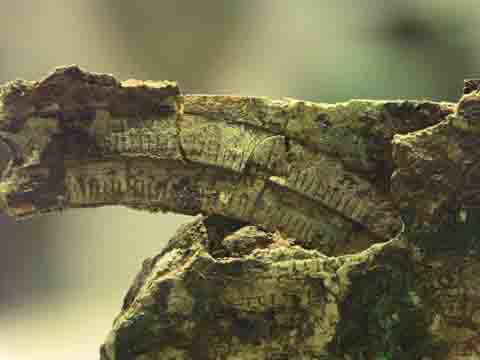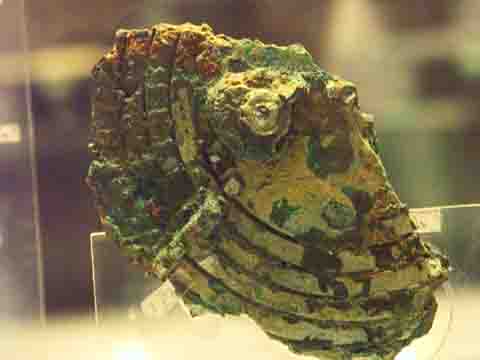Antikythera Mechanism
Click here to return to Greek Astronomy
lecture ![]()
The Antikythera Mechanism is a dramatic
example of Greek attempts to understand how things worked in the heavens. It is reported
that Archimedes (one of the great scientists of the Greek civilization along with
Aristotle and Euclid) constructed a mechanical device to trace out the motions of the sun
and planets in the third century B. C. In 1901 divers working off the island
of Antikythera found the remains of a clocklike mechanism 2,000 years old.
 |
It is now thought that the "Antikythera Mechanism" was a device perhaps similar to that of Archimedes (but probably not his, since the ship carrying it was wrecked in the first century B. C., two centuries after Archimedes). To the left you can see one of the main gears (image by G. Rieke). |
 |
To the left are two of the accurately ruled scales, along with some writing on one of the scales and more on the case in front. To the right, a series of nested scales and a fiducial across them to allow reading the scales simultaneously. (Images by G. Rieke) |  |
 |
Although the device was extensively
damaged by its 2000 years at the bottom of the Mediterranean, a reconstruction has been
put together (see left). It shows a facility with complex machinery as well as a strong
interest in the astronomical problem of the motions of the planets. |
The Greeks
may have been on the verge of developing complex machinery and an industrial society based
on it, although some have suggested that their heavy reliance on slaves made machinery
economically impractical and would have forestalled its widespread use (e.g., W. Durant,
“The Life of Greece”).
For more on
the Antikythera Mechanism, see the Wikipedia article (http://en.wikipedia.org/wiki/Antikythera_mechanism
For
an animation that shows how it worked (caution: 45 MB
requires high bandwidth)![]() (from Educational Technology Lab, University of Macedonia, http://etl.uom.gr/mr/Antikythera/anti.html)
(from Educational Technology Lab, University of Macedonia, http://etl.uom.gr/mr/Antikythera/anti.html)